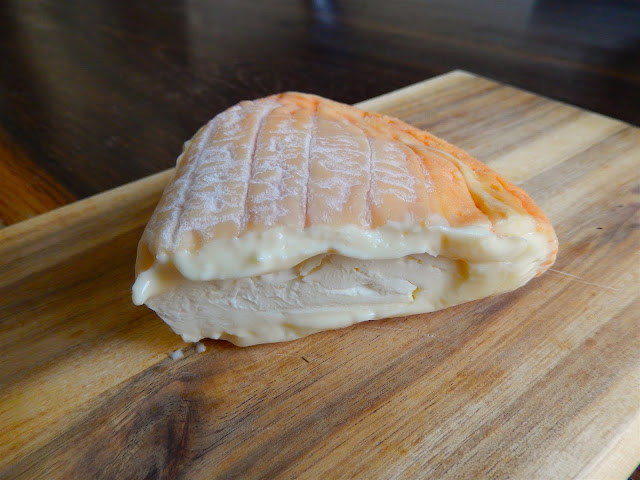Seriously, I think it is fair to say I chose the wrong language to learn if I wanted to sound real clever and convincing while talking about cheeses. I mean, the newcomer to the blog could be forgiven for thinking I only write about cheeses with German names, but I do in fact love French cheeses as well! It just so happens that knowing German, a phonetic language where every letter is pronounced, does one little good when trying to pronounce French cheese names where... seriously what am I supposed to pronounce again? I can do pretty well with 'le petit'. Maybe I need to do another exchange year, just work in a cheese store in Strasbourg or, I don't know, Toulouse? I hear it's alright there.
Origin: France
Milk: Cow, raw
Affinage: 45 days
Notes: What I want to know is, where are the gran versions of all of these petit cheeses? OK, seriously. It is a washed rind cheese from the Pyrenees region of France, although it does not smell nearly as, ehm, voluminous as some washed rind cheeses. Quite the contrary. Pretty rind though!
Thoughts: Hints of cream and garlic make up a very mild cheese, much milder than it looks and even milder than it smells. As with so many washed rind cheeses the bark is worse than the bite. The rind is perhaps the only caveat there, as it is quite thick and gritty for such a thin cheese. Get a rind-heavy bite of le petit Fuxéen and you will be quickly reminded of the style of cheese you are indulging in. The smoothy mouthfeel of the paste is the dominant expression in the cheese, carrying the flavor notes along in a pleasant but not overwhelming wave of cream.
Anyone know a French tutor that accepts payment in cheese? Or, say, mildly cheese related musings?





